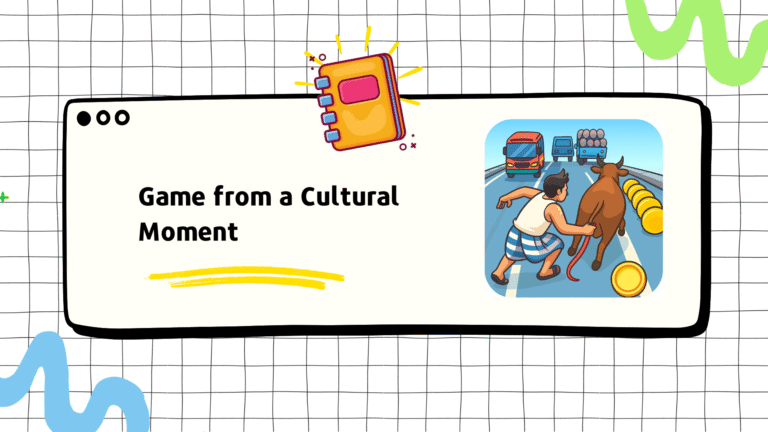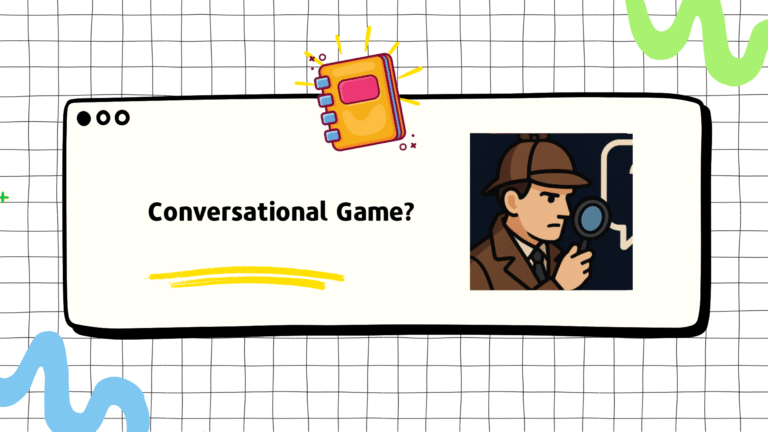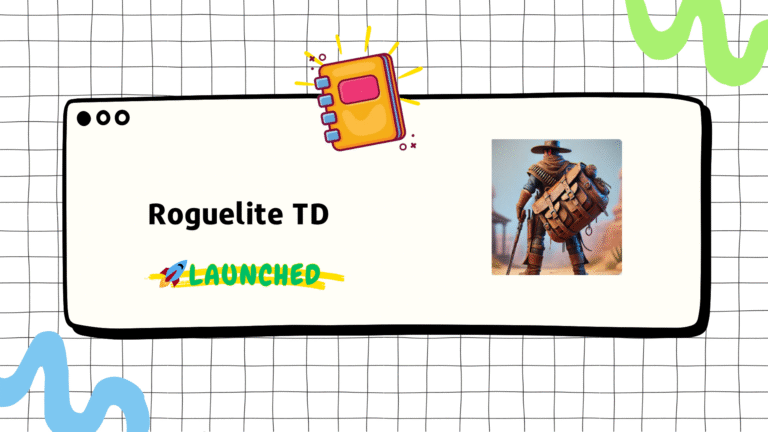
One of the most important things of a mobile game is to make it understandable. So it’s very important for the players to understand the game rules in a few seconds so that they can imagine themselves playing it. On the other hand, you want that D1 retention to hit above 40% along with a high playtime.
It’s very hard to nail the CPI and retention both. As CPI is very unpredictable, and the most important metric. What should we do when we do have a good CPI but not enough playtime or retention? Today I’ll discuss a few ways to do just that.
1. Add Actions to the Core Verb
Generally, hypercasual games are revolved around one core verb. For example Flip, stack, jump, slap, etc. Then for the core gameplay, we use that verb to perform a core action. For example:
Paper Fold -> Fold paper to reveal the image
Hole.io -> Eat objects to grow size
Coffee Stack -> Stack cups to increase servings
Slice Disc 3D -> Throw disc to slice enemies
Please note that the first verb is the important verb that drives our core gameplay. Let’s analyze Slice Disc 3D. To start with, we have a verb (throw) that creates the core action of the game (throw disc to slice enemies).
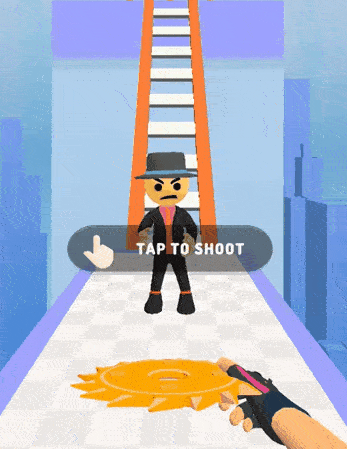
We will now try to give this verb more power by letting it act on different objects. As the game is about throwing discs, we’ll first imagine the different properties our discs can have.
1. Our disc is sharp: Obviously! It not only means that it can slice enemies, but it can also slice different objects. For eg: Bullets, exploding barrels, ropes, etc
2. Our disc can bounce: We will imagine our disc to have the bouncing property similar to the disc of Captain America
Now, let’s add actions to the verb
Throw disc to bounce off the walls
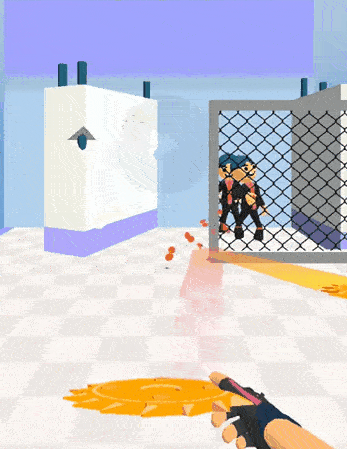
We can also bounce off the floor, so we add another action
Throw disc to bounce off the floor
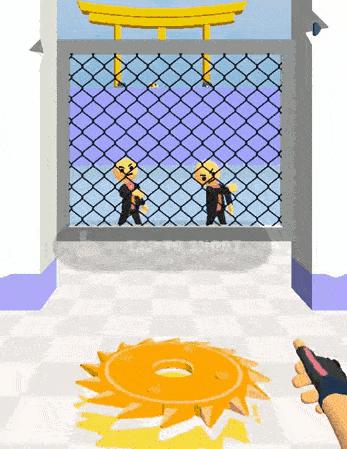
We have added power to our core verb by letting it act (bounce) on walls and the floor. By adding these bouncing options we have added a puzzle element to the game and also given the users different options to achieve the same goal (slice enemies)
Now, we will focus on the first property. Our disc can slice different objects. We have an enemy in the game which shoots bullets. Bullets can be exactly the kind of object we are looking to slice.
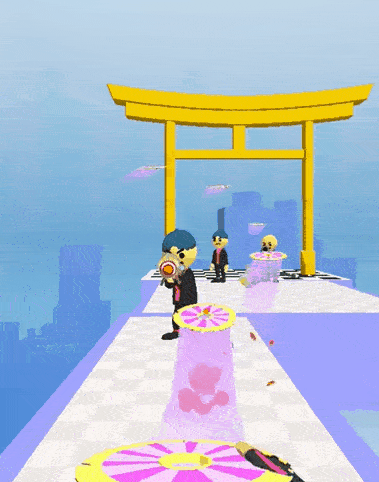
Similar to the enemies, the bullet moves toward the player which creates a threat. And it creates a new action
Throw disc to slice bullets
We can use this to create a new action. If we aim the shooter toward an innocent victim and let the shooter shoot. The player can slice the bullet to save the victim.
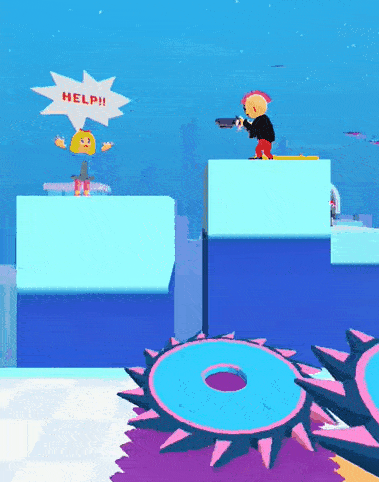
This way, we create another action.
Throw disc to save victims
If we keep going like this, we can potentially add a lot of objects that interact with the disc to create interesting scenarios.
For example, we can use a multiplier object that the disc interacts with that multiplies the disc, which creates a new action
Throw disc to multiply discs
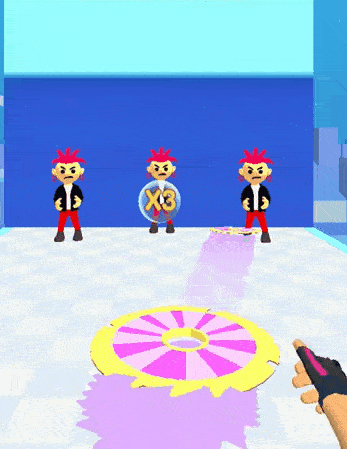
We can add barrels that blast enemies at a certain range
We can add ropes, by cutting we initiate something that kills enemies
We can add portals where if the disc goes through, it comes out of a different portal
We can go on and on. By giving more and more power to the core verb, we give more and more interesting gameplay choices to the player. It gives more ways for the player to reach the same goal (killing enemies)
2. Levels of Challenge
Having added more power to the core verb, we have essentially added different ways to play the game, and different ways to reach the same goal. Now we will focus on adding different levels of challenges to the gameplay. Although, I have put this point in a separate section of the article. This is not a different way to add depth, it’s just a different way to look at how we can add depth.
We want the game to allow different playing styles for the different skill levels of players. We have actually already added such style.
A player with no skill would throw the disc toward the enemy
A player with skill can bounce the disc on walls and then hit the enemy. A skilled player can try hitting multiple enemies with one disc.
An even more skilled player can bounce the disc and then hit multiple enemies.
Because we have given the power to the core verb, we can see this variation in the play. The thought process of adding depth can start from trying to add power to the core verb or it can start from thinking about integrating different levels of challenge. There’s no right way.
A game is a communication between the game and the player. So, whenever the player is doing well or operating on a higher skill level, as the developer we can appreciate them and praise the player. We can do such by showing popup texts, more particle effects, or even simply adding a score bonus on each performed skill
3. Risk vs Reward
To add interesting twists to the gameplay, we can offer skilled players to grab more rewards with a certain amount of risk. The important thing to understand here is that the player must understand the risk and it should be completely the player’s decision to take it.
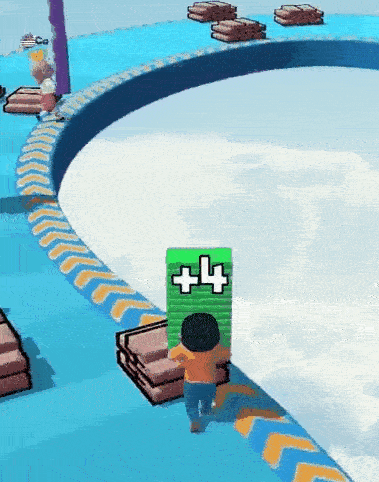
Shortcut run is a game in which the strongest selling point of the game is the risk-reward system of taking shortcuts. It’s an io game where the player collects and stacks plates that can be used to make bridges. The player can either run through the track normally or take risks by taking shortcuts using the plates. The comes with a big reward as it closes in on the distance between the player and the finish line.
The player can also decide how big a risk they want to take. By playing the game more and more the player gets an idea of how big a stack can use to cover a certain distance.
This is a major implementation of risk-reward. But it can be implemented at a small scale too in different parts of the game. For example, in the game Slice Disc 3D, you can either take normal shots which is safe. Or take high-risk bouncing shots, as they are harder to aim, and missing a few shots can give the enemies enough time to hit the player. But, it’s a high reward and it gives a score multiplier.
The player can wait for the enemies to come towards the player because as the enemies get closer to the player it’s easier to hit multiple enemies with one shot. But it’s risky.
4. Add optimized Actions to the Core Verb
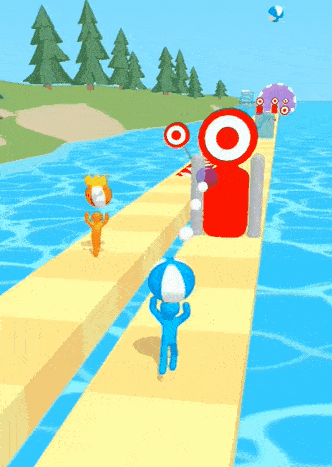
This is a game where you
Action 1: Throw balls on target to remove obstacles for the player
If you add an action to the core verb like this
Action 2: Throw balls on target to add obstacles for the enemy
It changes the gameplay completely and adds a lot of dynamism to it and makes the gameplay a lot more fun than it originally was. Here we can see 2 actions very much interconnected to each other. It adds an aspect of strategy into the game. Instead of adding more elements to the core you are taking what you have and adding more actions to it.
So, it’s not about just adding more and more elements to create more and more actions. It’s also about having more actions with the existing elements. So before adding more elements, you can ask yourself, ‘Can I add more actions without adding more elements?‘. This gives the gameplay, elegance.
This is why we are calling this way of adding an option an optimized action. You use what you have and without adding more cognitive load for the players, you add more actions. And this is why it deserves to be a separate point.
If we look back to Slice Disc 3D, when we were adding bouncing shots, we did not add any more elements that it already had. We just used what we have to create new actions. And those actions added a lot more to the game than most of the others where we also added a new element (eg: multipliers, bullets, etc). Hence they are optimized actions
These four points are not exclusive and are not meant to be in any order. But they can help generate the depth needed for a game.



